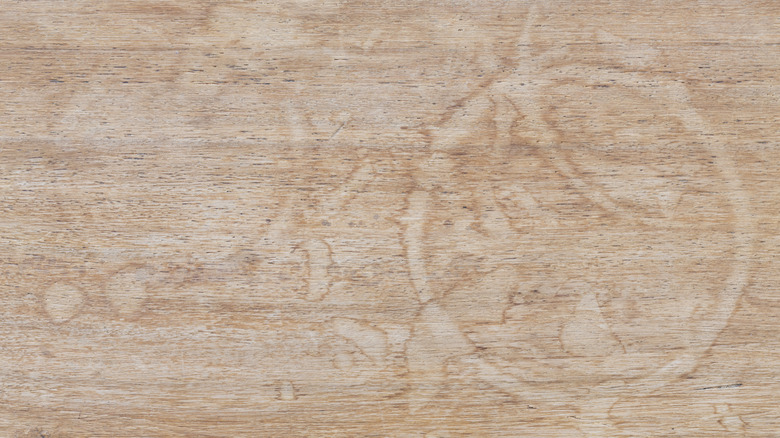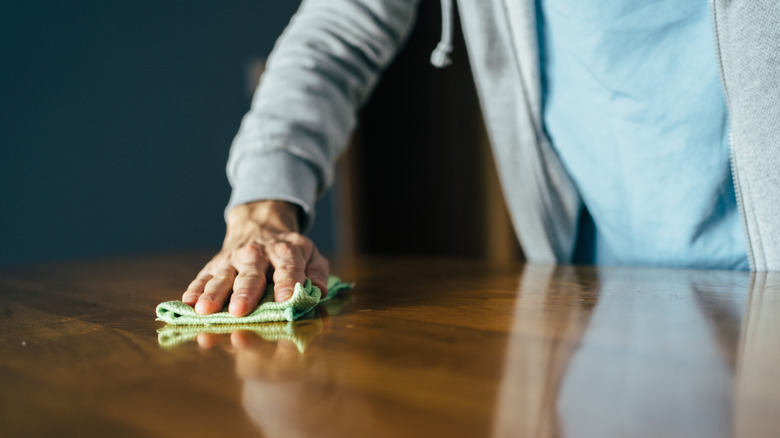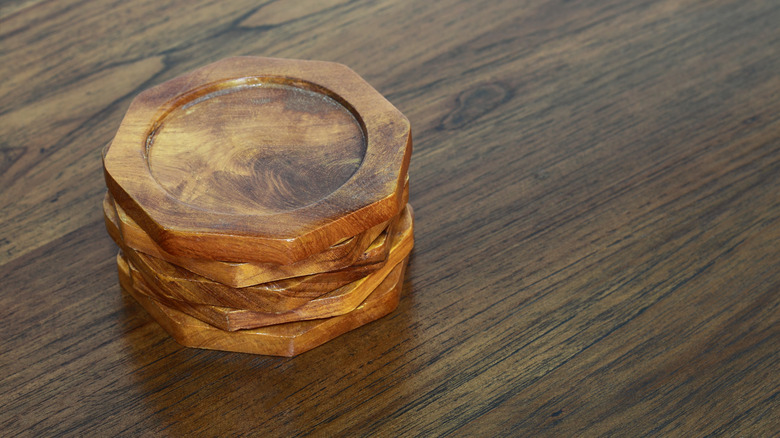Dispelling The Myth Of Butter Removing Ring Stains From Wood (And What You Can Use Instead)
We may receive a commission on purchases made from links.
The allure of sleek wood furniture can quickly fade, despite your best polishing efforts, when unsightly ring stains appear. Amidst the myriad of proposed solutions, a curious and somewhat unconventional remedy has garnered attention: butter. Yes, there are claims that butter can miraculously erase those bothersome marks. The question that lingers, however, is whether this remedy is grounded in reality or merely another myth in the realm of household hacks.
Wooden furniture has long been cherished for its timeless aesthetic and durability, yet it is not impervious to the wear and tear of daily life. Ring stains, often the result of hot, cold, or wet beverage containers placed directly on the surface, can mar the elegance of these furnishings. The notion of using butter to remedy such blemishes sparks intrigue, prompting us to explore the science behind this purported solution.
As we delve into the butter method, advocates argue that the fats in butter possess certain properties that can permeate the wood, moisturizing it and lifting the stains. Though, this seemingly straightforward approach raises skepticism. While butter may offer a temporary aesthetic improvement, it is far from a sustainable solution. In fact, the application of fats to wood may lead to an undesirable greasy residue, creating an open invitation for additional dust and grime to settle.
The problems with this method
Furniture lovers caution against embracing the butter method as a panacea for wood stains. While the initial application may yield a degree of improvement, the potential consequences outweigh the perceived benefits. The fats in butter can leave behind any number of residues on the wood surface. The nature of food-grade oils makes them susceptible to oxidation over time and them eventually turning rancid. Rancid butter can give off a distinct odor. This unpleasant side effect is in opposition to your cleaning endeavors, and the goal of achieving a fresh and clean surface is compromised by the emergence of an undesirable scent. This unintended outcome could exacerbate and multiply the issues one seeks to address, leading to even more challenges.
Furthermore, the long-term impact of applying fats to wood requires consideration. Wood is a porous material, and some may also argue that a greasy substance such as butter can make its own stain that will need treating, especially if used multiple times and developing build-up. Furniture, an investment in both aesthetics and functionality, deserves a thoughtful and informed approach to maintenance.
Other ways to remove ring stains and prevent them
In the pursuit of preserving the pristine nature of your wood furniture, seeking guidance becomes imperative. Rather than relying on the dubious butter method, using tried-and-true solutions that prioritize both short-term aesthetics and long-term wood health are better. When it comes to banishing ring stains on wood, experts recommend a product specifically designed for this purpose, such as Guardsman Water Mark Remover. Alternatively, using baking soda toothpaste (be sure it is not a gel formula) proves to be a quick, simple option. Gently rub the toothpaste into the stain and leave it for one minute before wiping it away with a damp cloth. If the stain is very recent, all that may be needed is a hairdryer to dry the moisture and remove it from the surface before it has time to penetrate any deeper.
Cleaning product companies always emphasize the importance of testing any cleaning method in a small, inconspicuous area before applying it to the entire surface. This precautionary step ensures that the chosen solution does not cause unintended damage or discoloration to the wood. It's a prudent approach that minimizes potential risks, while allowing individuals to gauge the effectiveness of the selected cleaning method.
Prevention, however, is better than cure. Using coasters and placemats provides a simple, yet effective, barrier between the wood surface and potentially damaging elements. This proactive measure not only preserves the aesthetic appeal of wood furniture, but also minimizes the need for extensive cleaning and maintenance in the future.


